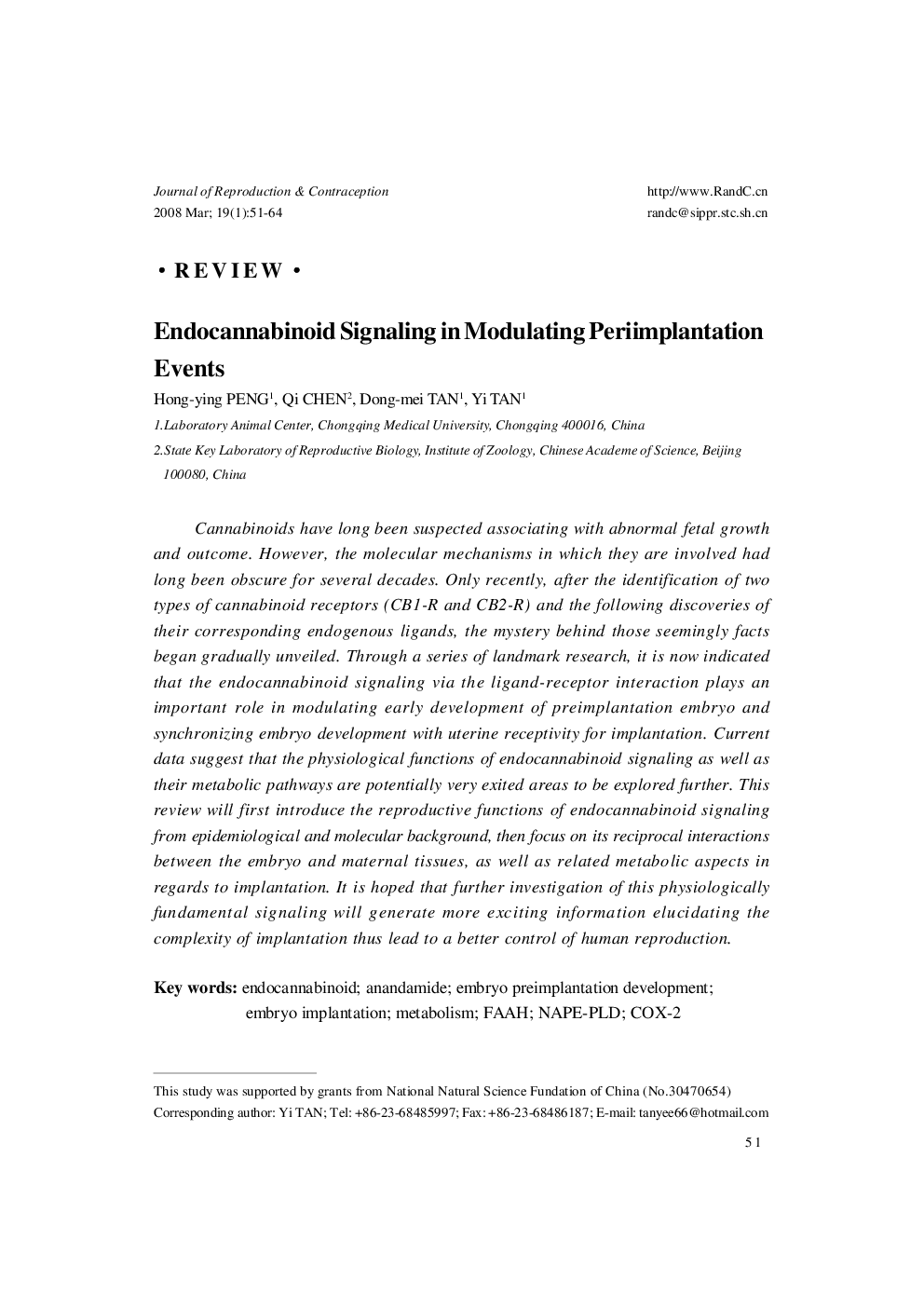| Article ID | Journal | Published Year | Pages | File Type |
|---|---|---|---|---|
| 3964155 | Journal of Reproduction and Contraception | 2008 | 14 Pages |
Cannabinoids have long been suspected associating with abnormal fetal growth and outcome. However, the molecular mechanisms in which they are involved had long been obscure for several decades. Only recently, after the identification of two types of cannabinoid receptors (CB1-R and CB2-R) and the following discoveries of their corresponding endogenous ligands, the mystery behind those seemingly facts began gradually unveiled. Through a series of landmark research, it is now indicated that the endocannabinoid signaling via the ligand-receptor interaction plays an important role in modulating early development of preimplantation embryo and synchronizing embryo development with uterine receptivity for implantation. Current data suggest that the physiological functions of endocannabinoid signaling as well as their metabolic pathways are potentially very exited areas to be explored further. This review will first introduce the reproductive functions of endocannabinoid signaling from epidemiological and molecular background, then focus on its reciprocal interactions between the embryo and maternal tissues, as well as related metabolic aspects in regards to implantation. It is hoped that further investigation of this physiologically fundamental signaling will generate more exciting information elucidating the complexity of implantation thus lead to a better control of human reproduction.
